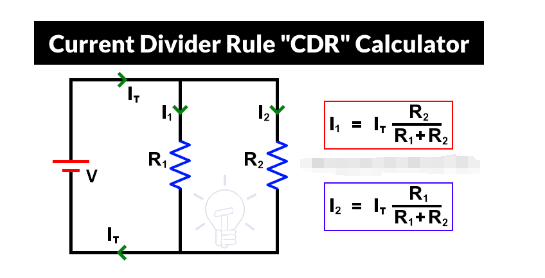
Introduction
In the realm of electrical engineering and circuit analysis, the concept of current division plays a fundamental role in understanding how current flows through parallel branches of a circuit. Current division calculators serve as invaluable tools in simplifying complex calculations involved in determining the distribution of current across various branches within a circuit. This article aims to delve into the intricacies of current division calculators, exploring their functionality, significance, applications, and the role they play in modern technology.
Understanding Current Division:
Before delving into the specifics of current division calculators, it’s essential to comprehend the underlying principle of current division. In parallel circuits, the total current entering the circuit branches out into individual paths based on the resistance of each branch. According to Ohm’s Law (I = V/R), the current through a branch is inversely proportional to its resistance: the higher the resistance, the lower the current.
Functionality of Current Division Calculators:
Current division calculators are digital tools designed to simplify the computation of current distribution in parallel circuits. They automate the complex mathematical calculations involved in determining individual branch currents based on their respective resistances. These calculators typically require users to input the total current and the resistance values of the branches, subsequently providing the currents flowing through each branch as output.
Types of Current Division Calculators:
Online Calculators: Accessible through web browsers, these calculators are user-friendly and offer quick solutions. They allow users to input resistance values and instantly obtain the currents in each branch.
Software Applications: More comprehensive than online calculators, software applications offer additional functionalities such as graphing capabilities, circuit analysis, and visualization tools. Examples include MATLAB, SPICE, and Multisim.
Significance and Applications:
The significance of current division calculators lies in their ability to streamline the design and analysis of electrical circuits. Engineers and technicians extensively use these tools in various applications, including:
Electronics Design: In designing circuits for electronic devices, engineers utilize current division calculators to optimize the flow of current, ensuring proper functioning of components.
Power Distribution Systems: In power systems, such as distribution networks and substations, understanding current division helps in managing loads across multiple branches efficiently.
Renewable Energy Systems: Current division calculators aid in optimizing energy harvesting and distribution in solar panels, wind turbines, and other renewable energy setups.
Circuit Troubleshooting: When troubleshooting faulty circuits, these calculators assist in identifying discrepancies in current distribution, aiding in pinpointing issues within the circuitry.
Future Developments and Challenges:
As technology advances, current division calculators are likely to evolve, incorporating more sophisticated algorithms and features. Integration with artificial intelligence and machine learning may enhance their predictive capabilities, offering insights into potential circuit behavior.
However, challenges such as accuracy in calculations, handling complex circuits, and accounting for non-linear components remain. Future advancements will need to address these challenges to ensure precise and reliable calculations in diverse circuit scenarios.
Conclusion:
Current division calculators stand as indispensable tools in the domain of electrical engineering, facilitating efficient analysis and design of parallel circuits. Their widespread application spans various industries, from electronics to power distribution, enabling engineers to optimize circuit performance and troubleshoot issues effectively. As technology progresses, these calculators will continue to evolve, playing a pivotal role in shaping the future of circuit analysis and design.
